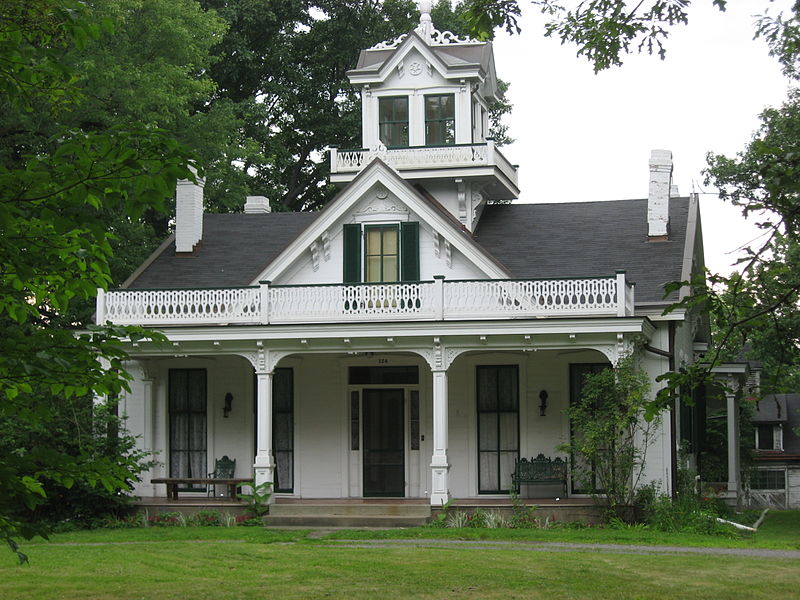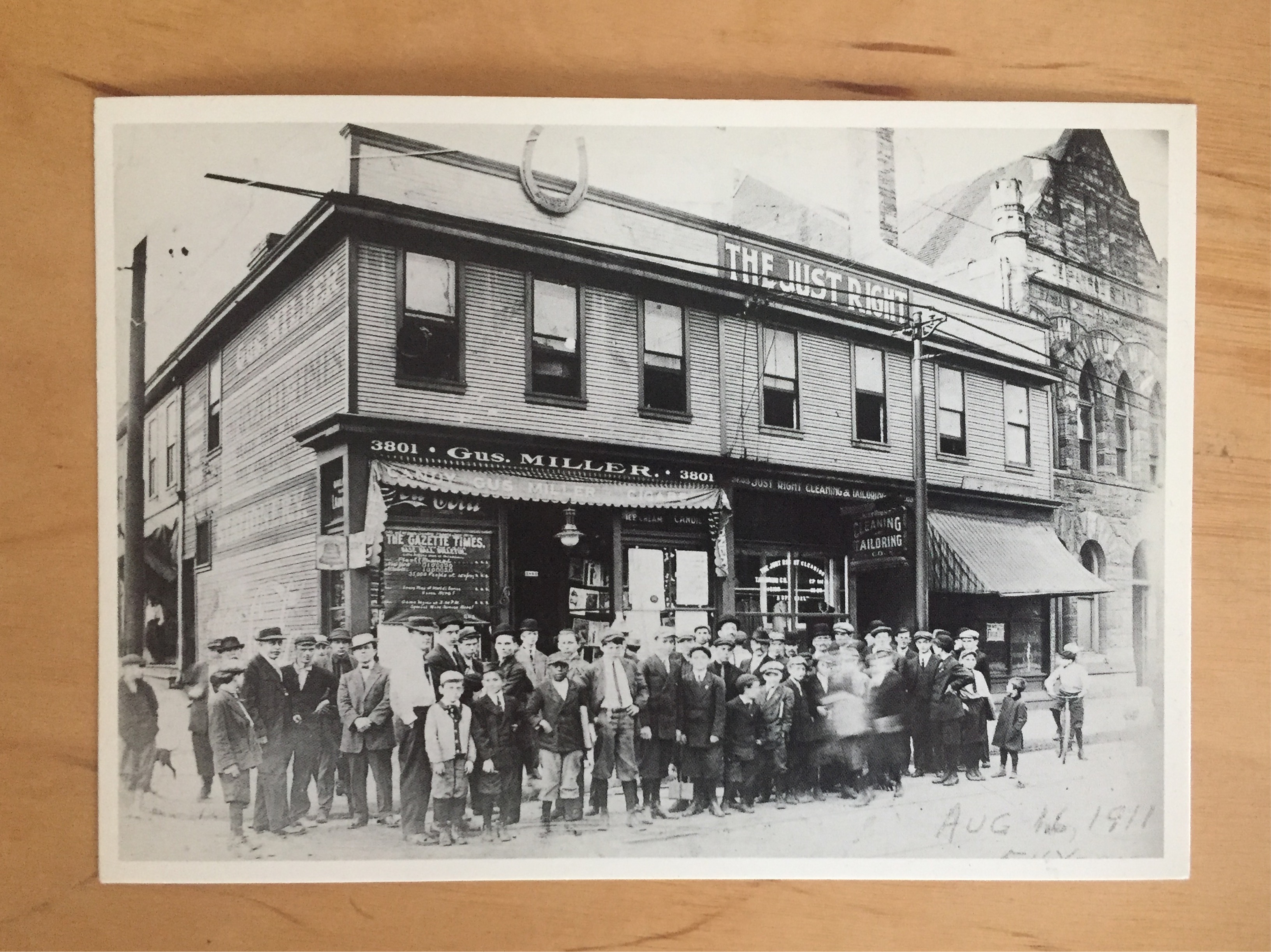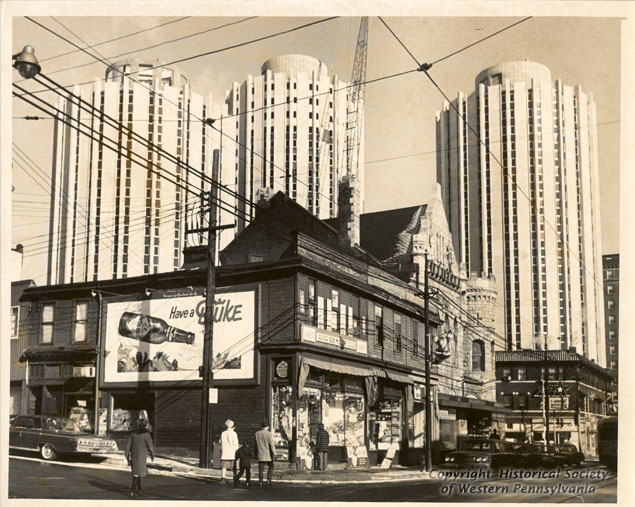I learned about the Gardener-Bailey house from this photo from Cam Miller (@CatLadyCam) on Instagram. Built in 1864, this building was added to the National Register of Historic Places in 1974. Does anyone know the history of this grand old Victorian home?
Tag: #thisplacematters
-

You Can Now Legally Drink at the Speakeasy in the William Penn
This is one of this historic things about Pittsburgh that I think is so fascinating that I assume everyone knows. But I am amazed how many people don’t know that the new(ish) bar in the basement of the William Penn Hotel which is named Speakeasy, really was a speakeasy back in the day.
I love old hotels. I love visiting old hotels. I love the book “Eloise,” which is about a girl who grew up in the Plaza hotel in New York city. I love the stories about the New Yorkers who lived in the Plaza hotel for years. (Check out the story of Fannie Lowenstein, who lived at the Plaza for 35 years and has been described at the Eloise from hell.) A few years ago, I drove cross country with a friend who was moving back to Pittsburgh from San Diego. Each day of the trip as I routed our stops to conveniently be at grand old hotels. The first time I set foot into an Ace Hotel was on the advice of a Twitter follower to visit the Ace Hotel in Palm Springs. So of course I love the William Penn Hotel and not just because it has some of the cleanest bathrooms in all of downtown Pittsburgh. If I have to wait for someone Downtown, I will almost always suggest the lobby of the William Penn Hotel.
The prohibition era speakeasy at the William Penn, reopens as “The Speakeasy”

The Speakeasy is underneath the lobby, if you are entering from William Penn Way, instead of going up the stairs to the reception/Starbucks area, go down the stairs and to your right. After prohibition, the space was used as storage for a number of years. The hotel renovated the space and reopened it to the public as a bar/lounge on December 5, 2012, which was the 79th anniversary of the repeal of prohibition.
From the Trib’s article on the grand opening of The Speakeasy in 2012:
A rear exit opens onto a warren of hallways that led to Oliver Avenue. In the event of a police raid, customers could beat a discreet retreat, Page says.
Here is a video tour of the reopened Speakeasy by WESA in 2012:
Pittsburgh Prohibition Cocktail History
Last month, CityLab, the Atlantic’s blog about all things urban published “The Secret Lives of Speakeasies,” the entire article is about Pittsburgh and that the term “speakeasy” was first uttered right here in here in Western, Pennsylvania:
Whisper “speakeasy” into a search engine of your choice and odds are you will stumble across the story of Kate Hester, the Pittsburgh hotelkeeper at the center of the amusing, possibly apocryphal origin story for the word.
Hester appeared in what can only be described as a prototypical trend piece for The New York Times in July 6, 1891. The story goes like this: Hester owned a saloon in McKeesport, just southeast of the city, that sold booze in defiance of a state law that upped the costs of licenses for alcohol so much that it was nearly prohibited. When customers got too rowdy, Hester would hush customers with “speak-easy, boys!” to avoid attracting the attention of authorities; the expression soon spread to the city, and the nation. “Some day, perhaps, Webster’s Dictionary will take it up,” the yarn concludes.
CityLab’s Andrew Small traveled to Pittsburgh to visit our speakeasy inspired bars, including the Speakeasy at the William Penn and Accasia on the southside. Small also met up with John Schalcosky, who updates the Facebook Page, “The Odd, Mysterious & Fascinating History of Pittsburgh.”
New Book Explores Pittsburgh Cocktail History
Local authors, Cody McDevitt and Sean Enright, have recently published a book on the history of cocktails in the steel city, “Pittsburgh Drinks: A History of Cocktails, Nightlife & Bartending Tradition.” You can read an excerpt of “Pittsburgh Drinks” on Littsburgh and listen to an interview with Sean and Cody on episode #80 of the Marta on the Move podcast.
Related articles
- Pittsburgh’s Most Iconic Bars (pittsburgh.cbslocal.com)
- Pittsburgh bar scene has thrived for years, with women at the helm (triblive.com)
- Wigle Whiskey’s WAM! project on Kickstarter (triblive.com)
-
East Liberty 1935: Subterranean Public Bathrooms
Today’s post comes from East Liberty Valley Historic Society Facebook page. ELVHS added some helpful captions to this photo of Penn Ave from 1935. This is the section of Penn Ave where Target is now located. One of the questions on the Facebook post asks if these bathrooms still exist underground. It would be interesting to find out if these were filled in or if there are still bathrooms under Penn Ave. A different take on the Pittsburgh Potty.
I don’t believe any of the buildings in this photograph are still standing today.
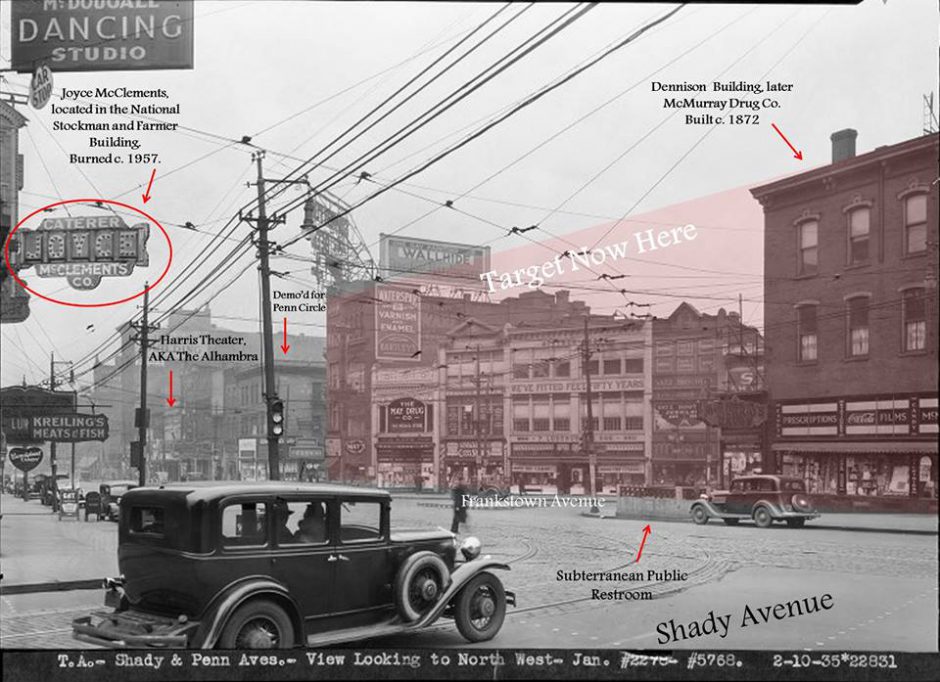
You can find more information about Joyce McClements on this family genealogy website here. It looks like after the fire, the restaurant relocated to the Kenmawr building at Walnut & Shady.
This is the current view from the intersection where Shady meets Penn.
The roads in the 1935 photo are different than today. Frankstown Road no longer intersects Penn Ave.
-
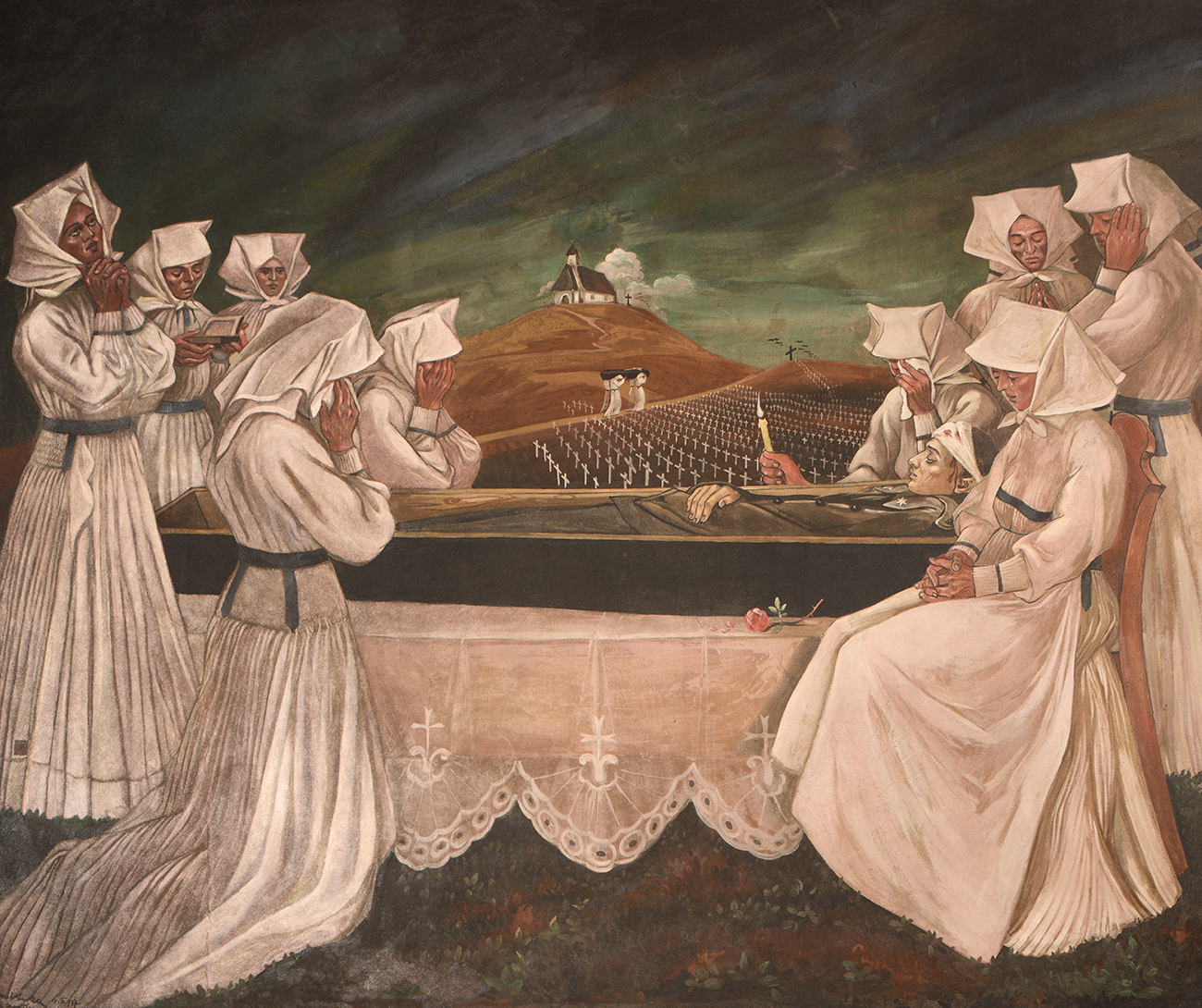
Maxo Vanka Murals & St. Nicholas Croatian Catholic Church in Millvale
Today’s preservation month post is inspired by the Millvale Musical Festival, which is happening on Saturday, May 13. Millvale continues to gain popularity as a destination for breweries, music, community projects and some impressive community events. If you are headed to Millvale then you need to know about the Maxo Vanka murals, which might be one of the best kept secrets in Pittsburgh.
If you are headed to Millvale for the music festival, you might want to take a little break to check these unique works of art. Even if you are not headed to the music festivals, the Maxo Vanka murals are worth an hour of your Saturday. More details on visiting the murals below.

Photo credit: St. Nicholas Church website. From Route 28, St. Nicholas Croatian Catholic church looks like an unassuming church building that is tucked away on the bluff. Inside the church, the decor is anything but ordinary, the walls of the church are covered with 25 murals by the artist Maxo Vanka. What makes these church murals unique are the political statements found in several of the scenes. The Maxo Vanka murals have been compared to the works of Mexican muralist Diego Rivera and some of the murals of the Works Progress Administration artists.
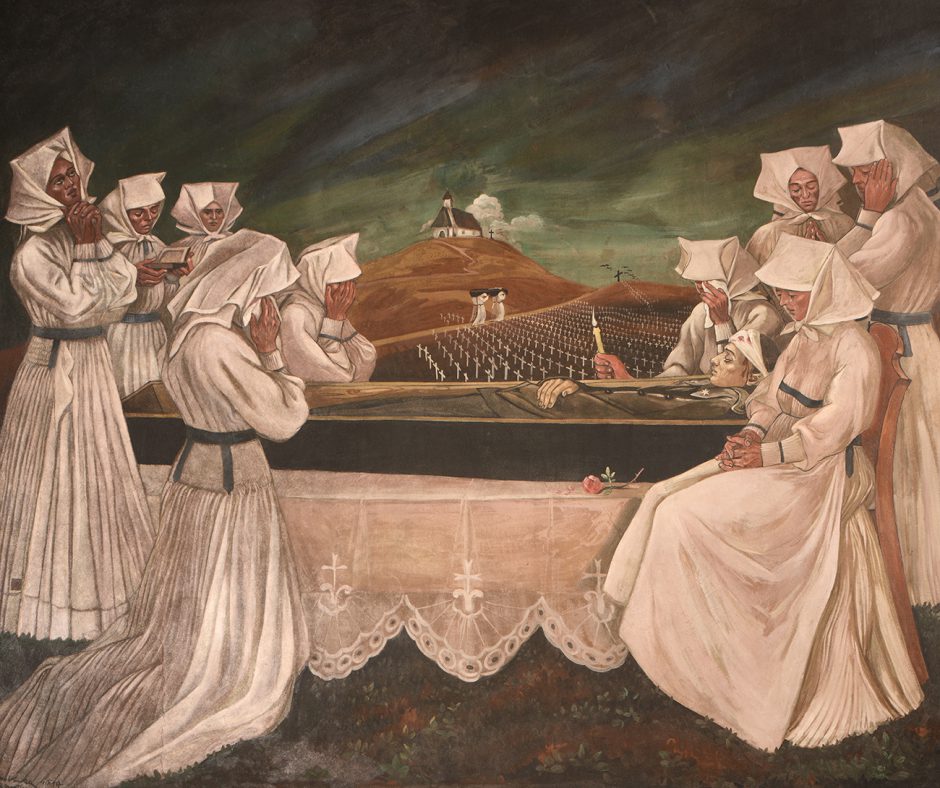
Croatian Mother Raises Her Son for War, Maxo Vanka, 1937. Photo credit: Society to Preserve Millvale Murals of Maxo Vanka. All of the murals can be viewed online here.
The other unique thing about the murals is that they have their own nonprofit that works to preserve, restore and promote the murals to an audience outside of the congregation. The Society to Preserve the Millvale Murals of Maxo Vanka was founded in 1991 and has worked to put the murals on the National Register of Historic Places.
If you are interested in learning more, start with the SPMMMV website at vankomurals.org.
Pittsburgh filmmaker Kenneth Love made a documentary about the murals in 2012, “Maxo Vanka’s Masterpiece: The Murals at St. Nicholas Church”. You can purchase a DVD of the documentary from the church.
Visiting the Maxo Vanka Murals
Docent led tours are held every Saturday at 11am, Noon and 1pm. Tours last about an hour. Note that tours may be cancelled or postponed due to parish activities. It is recommended that you register in advance for tours. Private tours are available on request. If you are visiting Pittsburgh on a weekday, be sure to reach out for a tour or if the church is open, you should be able to stop by and see the murals in person.
More information on the VankaMurals.org website. The Society to Preserve the Millvale Murals of Maxo Vanka is also on Facebook.
WPA Murals in San Francisco’s Coit Tower

Detail of one of the murals in Coit Tower. Last November, I had the good fortune to visit San Francisco. San Francisco has a nonprofit, SF City Guides, that offers free walking tours of a variety of places around the city. Since it was raining we opted for the indoor tour of Coit Tower on Telegraph Hill. If you enjoyed seeing the murals of Maxo Vanka, I highly recommend a visit to Coit Tower to see the fresco murals from the Works Progress Administration artists. The skill of the fresco artists is impressive and these murals also contain many political messages.
Related articles
- Nonprofit completes conservation of St. Nicholas murals (triblive.com)
